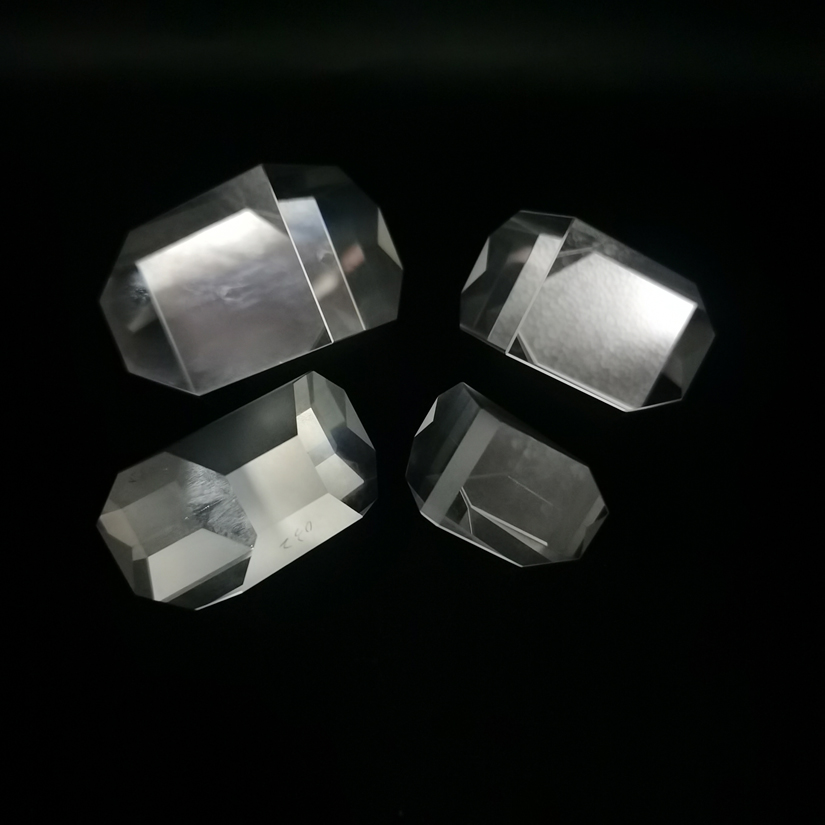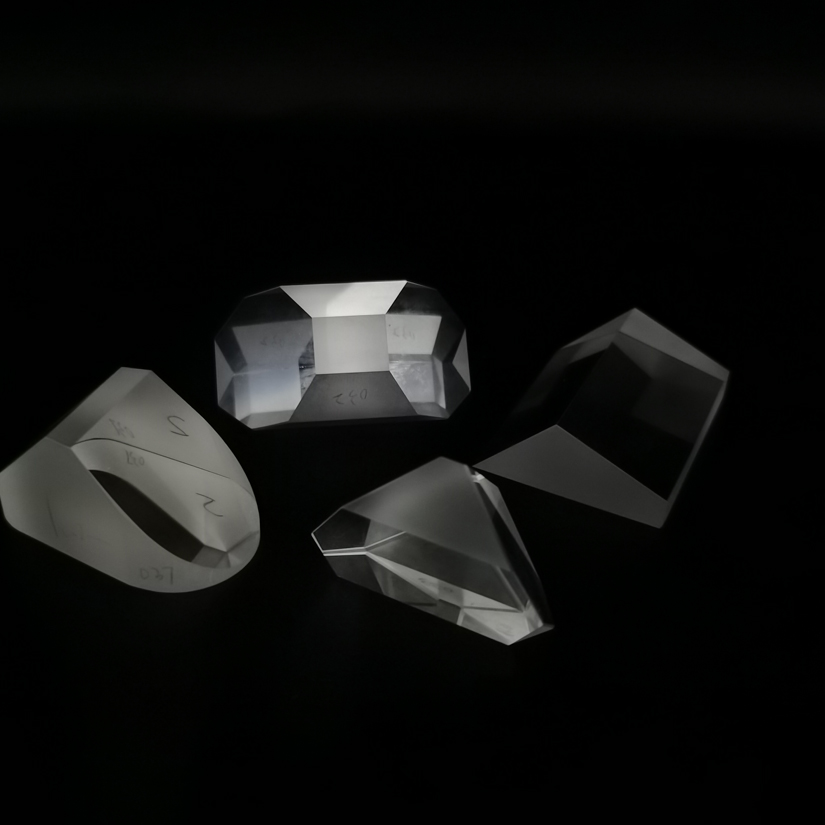Roof Prism
(2024年04月19日)https://www.tcoptik.com/products/roof-prism.html
Roof Prism
Roof prism is often used in very compact binoculars.
a. Small Size
b. Pyramid 1'
c. High Volume
d. High Testing
Specification of Roof Prism Design
MaterialBK7 Grade A Optical Glass
Dimension Tolerance+0.0, -0.2 mm
Clear Aperture>85%
Surface Quality60-40 Scratch And Dig
Roof Angle Tolerance< 1 arc Minute
Flatnessλ/2 @ 632.8 nm
Protective Bevel0.25 mm x 45°
Roof Prism Capacity
MaterialOptical Glass, Fused Silica, Sapphire.
Dimension1-250 mm
Dimension Tolerance+0/-0.1 mm
Surface Flatnessλ/10@632.8 nm
Surface Quality10-5
Angular Accuracy5 Second
CoatingUncoated, AR, HR, Beamsplitter, etc.
BK7 Roof Prism Standard Products
Part No.A (mm)B (mm)h (mm)
TRP101151512
TRP102232318
TRP10331.531.523
What Is the Advantage of Using Roof Prisms?
Roof prisms offer several advantages compared to other types of optical prisms. The most significant advantage of roof prisms is their compact design. Because they are made from two right triangles that are joined together, they allow for a straight optical path, resulting in a streamlined and compact design.
This compact design is particularly useful for binoculars and other handheld optical instruments. The use of roof prisms in binoculars enables them to be more compact and lightweight, while still maintaining excellent optical performance. This results in binoculars that are easier to carry and use, making them ideal for outdoor activities such as hiking, bird watching, and wildlife observation.
Another advantage of using roof prisms is their better alignment of optical components, which can result in improved optical performance. The use of roof prisms can significantly reduce the amount of unwanted light scattering, resulting in brighter and clearer images.
Overall, the compact design and improved optical performance offered by roof prisms make them a popular choice for a wide range of applications, including binoculars, spotting scopes, and cameras. They are ideal for situations where the compact and portable design is essential without compromising on optical quality.
The Difference Between a Roof Prism and a Right Angle Prism
Roof prisms and right angle prisms are two different types of optical prisms that serve different purposes. The primary difference between these two prisms is their shape and the way they redirect light.
A roof prism is a long, thin prism made from two right triangles that are joined together. The light enters the prism on one end and is redirected multiple times before exiting at the opposite end. Roof prisms are used for image inversion and erecting purposes in compact optical instruments such as binoculars, cameras and spotting scopes.
On the other hand, right angular prisms have a 90-degree angle between two perpendicular rectangular faces with an angled face that connects them. They work by reflecting light off the hypotenuse of the triangular prism to redirect the beam at a 90-degree angle. Right angle prisms are commonly used for beam redirection in laser technology, measuring refractive indices, and precise alignment of optical instruments, including cameras and telescopes.
Overall, the primary difference between a roof prism and a right angle prism is their shape and use. Roof prisms are best suited for compact optical instruments that require image inversion, while right angle prisms are ideal for redirecting light beams at a 90-degree angle in laser technology, measuring refractive indices, and precise alignment of optical instruments.
If you want to know more kinds of prism system binoculars, please visit our website.
As a custom optics supplier, we can provide kinds of optical element for sale, if you are interested, please contact us.
- このできごとのURL:





コメント